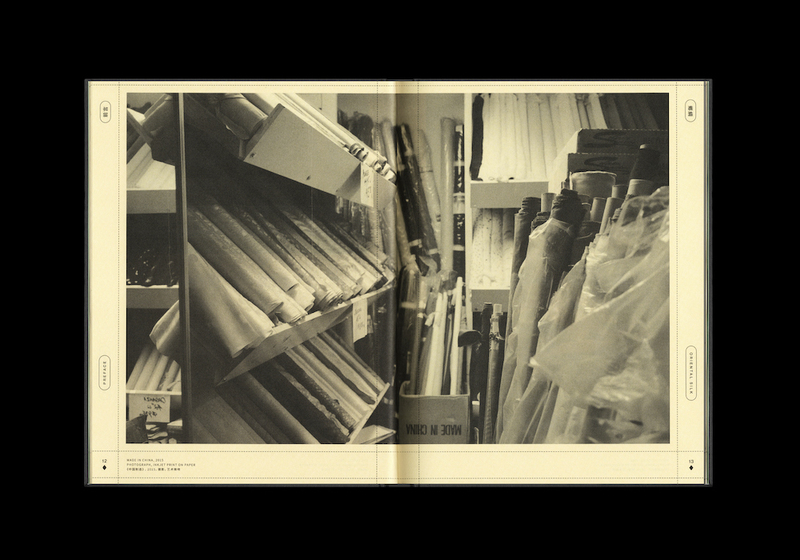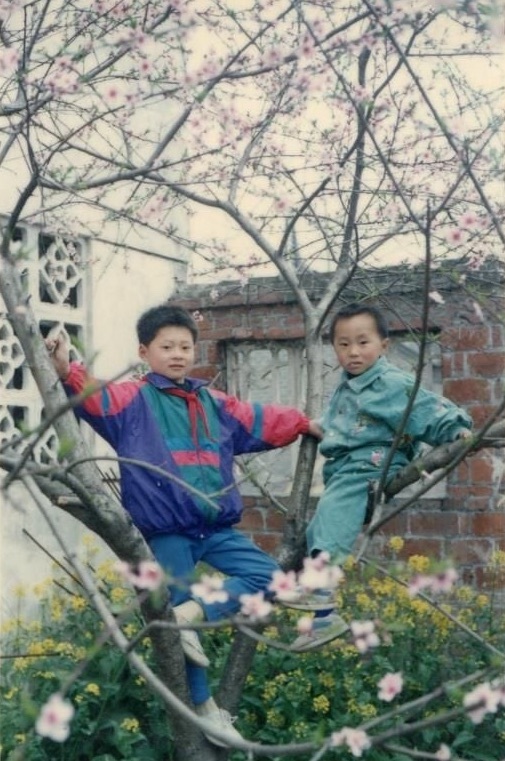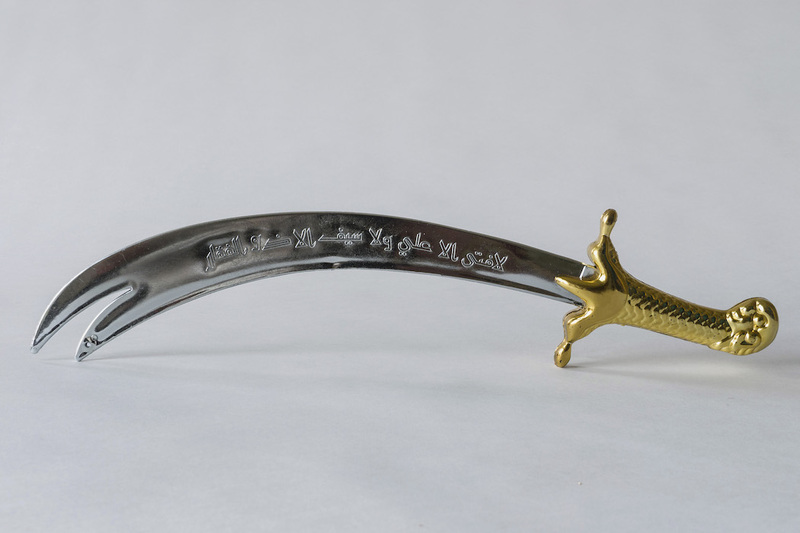
EastEast is re-publishing a chapter from Caravane Earth's The Majlis book: an excerpt from A. H. Fitzwilliam-Hall's article "An Introductory Survey of the Arabic Books of Filāḥa and Farming Almanacs." As the text demonstrates, the traditional agricultural practice known as Filāḥa extends beyond sustainability to encompass the ethical and aesthetic aspects of human, plant, and environmental relationships. The chapter sheds light on a lesser-known facet of Arabic agriculture, emphasizing its significance in sustaining civilizations and its integral connection to Islamic principles.
Filāḥa is a lesser-known traditional agriculture technique that goes beyond more than just sustainability; it speaks to the beauty and ethics involved in sustaining the proper relationship between humans, plants, and the earth. Filāḥa has historical links to the region of Andalucia but in fact pertains to a whole swathe of Muslim regions much wider than the Mediterranean, ranging from Morocco to Central Asia.
Husbandry is the foundation of civilization - all sustenance derives from it, as well as the principal benefits and blessings that civilization brings.
— Ibn ‘Abdūn in his treatise on Ḥisba, c. 1147, Seville
The Arabic words filāḥa, “cultivation, tillage,” and by extension “agriculture, farming, husbandry,” and fallāḥ, “husbandman, tiller of the soil, peasant, farmer,” are derived from the verbal form falaḥa meaning “to cleave, split,” and in particular, “to plough, till, cultivate the land.” It also means “to thrive, prosper, be successful, lucky, or happy,” the two meanings being brought together beautifully by Ibn ‘Abdūn in the quotation above. Moreover, the word is sung out from the minarets of every mosque throughout the Muslim world five times each day during the call to prayer" hayya ‘ala ’l-falāḥ (come to success, come to salvation). Husbandry, well-being (in this world and the next), and worship are thus inextricably linked in the Arabic language.
This may come as some surprise. The Arabs, in popular imagination, came out of the desert as nomadic sheep- and camel-herders or breeders of fine horses, pastoralists rather than cultivators, and the Islamic civilization they engendered and spread through half the world is renowned more for its accomplishments in urban architecture and the decorative arts, its learning in philosophy, mathematics, medicine, and the sciences, and for its technical inventiveness and mercantile success than for any particular proficiency in agriculture. Yet, three thousand years before Islam, farmers in what is now Yemen were skillfully terracing rain-fed mountain slopesslopes Wilkinson, T.J. (1999). ‘Settlement, soil erosion and terraced agriculture in highland Yemen: a preliminary statement’. In: Proceedings of the Seminar for Arabian Studies vol. 29, pp. 183-191. and cultivating wadis by means of spate irrigation to create what the ancient Greeks called Eudaimon Arabia, and the Romans Arabia Felix, “happy, fortunate, flourishing Arabia,” on account of its abundant fruits and flocksflocksMentioned by the late 3th C. BC Euhemerus, 1st C. BC Diodorus Siculus, and early 1st C. AD Strabo.
. Elsewhere, in Eastern Arabia, intensive oasis agriculture based on subterranean falāj irrigation was being developed as early as 1000 BC1000 BCMore specifically, in Al Ain, now within the United Arab Emirates. See Al-Tikriti, W.Y. (2002). ‘The south-east Arabian origin of the falaj system’. In: Proceedings of the Seminar for Arabian Studies vol. 32, pp. 117 - 138.
. The Arabs already had a long history of farming when, with the spread of Islam from the 7th century AD this expertise, especially in matters of water harvesting and irrigation, in conjunction with the local knowledge of farmers in Iraq and Syria, Palestine and Jordan, Persia, Egypt, North Africa, Sicily, and Spain (each with their own long traditions of husbandry), produced a remarkable resurgence in agriculture.
BnF / Département des Manuscrits. Arabe 2964
By the early 9th century, most parts of the world under Islamic governance were experiencing an extension of agriculture into lands that had never been cultivated or that had long been abandoned. By means of newly introduced crops, the widespread diffusion of irrigation technology, and the more intensive rotations that these made possible, there were marked improvements in the productivity of agricultural land and laborlaborWatson, A.M. (1983). Agricultural innovation in the early Islamic World. London-New York: Cambridge University Press, Foreword.. Over the next five to seven hundred years, with variations from place to place, agriculture thrived.
In The Mind of the Middle Ages, the historian Frederick B. Artz writeswritesArtz, Frederick B. (1980). The Mind of the Middle Ages. The University of Chicago Press. 3rd edition revised, p. 150.:
The great Islamic cities of the Near East, North Africa and Spain . . . were supported by an elaborate agricultural system that included extensive irrigation and an expert knowledge of the most advanced agricultural methods in the world. The Muslims reared the finest horses and sheep and cultivated the best orchards and vegetable gardens. They knew how to fight insect pests, how to use fertilizers, and they were experts at grafting trees and crossing plants to produce new varieties.
And Thomas Glick, writing of Muslim Spain, sayssays Glick, T.F. (1978). Islamic and Christian Spain in the Early Middle Ages. New-Jersey: Princeton University Press, p. 78.:
Fields that had been yielding one crop yearly at most prior to the Muslims were now capable of yielding three or more crops in rotation . . . Agricultural production responded to the demands of an increasingly sophisticated and cosmopolitan urban population by providing the towns and cities with a variety of products unknown in Northern Europe.
The flourishing, cultivated, predominantly urban civilization of classical Islam was only made possible and was largely dependent upon an equally sophisticated and fertile revolution in the countryside.
The new agriculture that followed in the wake of Islam and emerged across much of the Middle East and Mediterranean world appears to have been quite different from the Roman, Byzantine, Sassanian, and Visigoth models that preceded it
Although the notion of a medieval Arab Agricultural Revolution, first proposed by Andrew Watson in 19741974Watson, A.M. (1974). ‘The Arab Agricultural Revolution and Its Diffusion, 700 - 1100’. The Journal of Economic History 34 (1), pp. 8 - 35., or of an Islamic Green Revolution as called by othersothersBurke, E. (June 2009). ‘Islam at the Center: Technological Complexes and the Roots of Modernity’. Journal of World History, 20 (2): 165 - 186 [174].
, has been challenged by some scholars, this is not the place to recapitulate the argument, which seems to revolve around matters of degree and detail rather than substance. What is clear is the marked change in the way farming was done and its undoubted success. The new agriculture that followed in the wake of Islam and emerged across much of the Middle East and Mediterranean world appears to have been quite different from the Roman, Byzantine, Sassanian, and Visigoth models that preceded it. It resulted from the synthesis of a number of new and old elements skillfully worked into a productive and sustainable system, giving it a particular, characteristic stamp. The elements of new agriculture, identified and meticulously documented by Andrew Watson in his seminal study on agricultural innovation in the early Islamic worldIslamic world Watson, A.M. (1983). Agricultural innovation in the early Islamic World. London-New York: Cambridge University Press.
, can be summarized thusly:
Foremost was the introduction, acclimatization, and further diffusion of new food crops, mainly fruit trees, grains, and vegetables, but also plants used for fibers, condiments, beverages, medicines, narcotics, poisons, dyes, perfumes, cosmetics, timber, and fodder, as well as garden flowers and ornamental plants. The most important of these new crops were sorghum, Asiatic rice, hard wheat, sugar cane, Old World cotton, and some citrus fruits, as well as such exotics as banana and plantains, coconut, watermelon, mango, spinach, colocasia, globe artichoke, and aubergine. The influx of new crops and plants, many of which came from India, South-East Asia, and Central Africa, was only made possible by the unprecedented unification of a large part of the Old World under Islam, which facilitated long-distance travel by merchants, diplomats, scholars, and pilgrims, and unleashed the free movement of people from very different climates and agricultural traditions—Indians, Malays, Persians, Yemenis, Africans, Berbers, and Syrians, among others. This human flow and cultural exchange facilitated not only the diffusion of crops and plants but the know-how to grow them. At the same time, a fertile intellectual climate of scientific enquiry and experimentation among botanists and agronomists and the propensity of traditional husbandmen everywhere to select for local conditions, produced a profusion of cultivars of the old and new crops (as well as new breeds of livestock). For example, in the 9th century Al-Jāḥiẓ stated that 360 kinds of dates were to be found in the market of Basra; in the early 10th century Ibn Rusta reported 78 kinds of grapes in the vicinity of Sana‘ā’ in Yemen; Al-Anṣārī, writing of a small town on the North African coast about 1400, said that the environs produced 65 kinds of grapes, 36 kinds of pears, 28 kinds of figs and 16 kinds of apricots; and in the 15th century, Al-Badrī wrote that in the region of Damascus 21 varieties of apricots, 50 varieties of raisins and 6 kinds of roses were to be foundfoundIbid. p. 1, and p. 149, note 2.. For the Yemen, Varisco records at least 88 named varieties of sorghum, the staple crop, documented in literary sources or used today in the field.field.Varisco, D.M. (1997). ‘The Production of Sorghum (Dhurah) in Highland Yemen’. In: Medieval Folk Astronomy and Agriculture in Arabia and the Yemen. Aldershot: Variorum, p. 73-80.
The range of crops and plants grown (and eaten) was unparalleled.

F1998.82 / Freer Gallery of Art
The newly introduced crops induced significant changes in cultural methods. Because many of them originated in hot, moist tropical and sub-tropical climates, in their new environment they needed the heat of summer, traditionally a “dead” season in Middle Eastern and Mediterranean agriculture, which had hitherto been more or less restricted to crops that could be grown in the cooler but wetter winter months. Many of the new crops had to be irrigated, but the bonus of a new summer growing season led to the widespread adoption of systems of crop rotation and multiple cropping that allowed two, three, and even four crops a year to be taken from the same piece of land, summer and winter, where before in the Roman, Byzantine and Judaic agricultural traditions there had been at best one crop a year and most commonly one every two yearsyearsWatson, op. cit., pp. 123-24.. Such intensive cropping regimes would inevitably deplete the soil of its natural fertility if not replenished, so the new farming redressed the balance with copious (though carefully controlled) applications of all kinds of organic manures, natural fertilizers, composts, mulches, and minerals, incidentally bringing about a closer integration between cultivation and the rearing of livestock.
This human flow and cultural exchange facilitated not only the diffusion of crops and plants but the know-how to grow them
While not all the new agriculture was dependent on artificial irrigation, many of the new crops—especially sugar cane and rice, and to a lesser degree, cotton and some of the tropical and sub-tropical fruits—were water-hungry crops. The development of sophisticated systems for harvesting, storing, and distributing water was a hallmark of the new agriculture, driven by the expertise of Arab irrigators drawing on their long experience of oasis cultivation. Certainly, irrigation had been practiced since antiquity in all the newly Islamic lands, but many of these systems were in terminal decline. Although few really innovative hydraulic technologies were invented at this time, the revival and expansion of irrigation through the widespread adoption and improvement of well-known devices and structures including water-lifting machines, qanāts, diversion dams, distribution networks, siphons, and storage reservoirs, coupled with new Islamic institutions and legal frameworks for the equitable distribution and management of water and the undoubted skill of the irrigators themselves, transformed the agricultural landscape.
The diffusion of new crops and cultivars, the adoption of new multiple-cropping and rotation regimes, the abundant use of manures, and the refinement and expansion of irrigation were supported, crucially, by changes in land tenure and taxation that accorded farmers more liberty and a greater incentive to improve their land, all underpinned by Islamic precepts and customary laws by which farming was conducted more fairly and more effectively. For the first time in many places, any individual—man or woman—had the right to own, buy, sell, mortgage, and inherit land, and most importantly, farm it as he or she liked. Relatively low rates of taxation, where they existed at all, were paid as a fixed proportion of output, freeing farmers from uncertain and capricious tax hikes, in contrast to the oppressive rural taxation prevailing in the late Roman, Sassanian and Byzantine empires. Large estates, which had everywhere come to dominate and often monopolize agriculture, were often broken down into smaller ownerships, or at least had to compete with smaller farms and individual peasant smallholdings. The lands around cities were almost everywhere given over to small market gardens and orchards. Serfdom and slavery were virtually absent from the countryside in the early Islamic world—instead, “the legal and actual condition of the overwhelming majority of those who worked on the land was one of freedomfreedomWatson, op. cit., p. 116..”
These are the salient features of the new agricultural system, which has been called Moorish agriculture in relation to Spain but which is more properly and inclusively termed Islamic agriculture, for it was not confined to Moorish Andalusia, and although its origins lay in the intensive, irrigated, multi-story, mixed-crop farming of the ancient Arabian oases and wadis, it was not exclusively Arab either, but developed in association with the traditional knowledge and skills of farmers right across the new Muslim world under the impetus and aegis of Islam.
A full version of the text is available here: http://www.filaha.org/introduction.html







